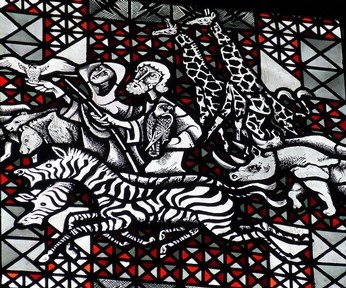Quiz Answer Key and Fun Facts
1. Dogs.
When people in Bible times were referred to as dogs, this was generally considered to be a complimentary thing to be called, implying good fortune.
2. Goats.
Whenever goats are mentioned in the Bible, there is always a negative connotation regarding them.
3. Pigs.
Even though eating swine flesh was "taboo" for the Jewish population as a whole, there were times when it was acceptable to indulge in partaking of this particular meat. It could be consumed by the priests during certain high holy days, but only if it was prepared correctly.
4. Lions.
Lions are known as the "king of beasts", but can you tell me who is referred to in scripture as "The lion of the tribe of Judah"?
5. Eagles.
Nothing can quite represent the concept of freedom like a flying bird. The eagle has long been held in esteem as one of the most noble and free-spirited of feathered creatures. Although there are no Biblical references to these majestic birds, there is one scripture that alludes to them indirectly.
6. Camels.
These beasts, commonly referred to as the "ships of the desert", are mentioned a number of times in the Bible, but there is the only one reference to them found in the New Testament.
7. Sheep.
Sheep are not known for their extreme brilliance, and are creatures of habit. Once they get into an established routine, it is difficult to break them of it. In which of the following scriptures do we find Jesus referring to those who follow Him as His "sheep" in a conversation with Simon Peter?
8. Ravens.
They fly, but are not regarded as majestic as the soaring eagles. The prophet Elijah was once fed by them as God had instructed them to do. How is the raven typically viewed in the scripture and why?
9. Oxen.
These strong, brute beasts have been used by man for centuries involving any work that requires strength, such as milling corn. They were used as beasts of burden, for pulling carts, but they also were one of the sacrificial animals of the ancient Jewish people.
10. Owls.
It is fashionable for us to consider owls to be wise, but how does the Bible refer to them?
Source: Author
logcrawler
This quiz was reviewed by FunTrivia editor
CellarDoor before going online.
Any errors found in FunTrivia content are routinely corrected through our feedback system.
